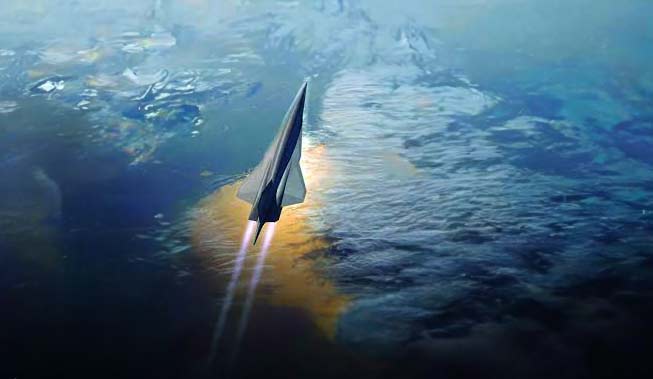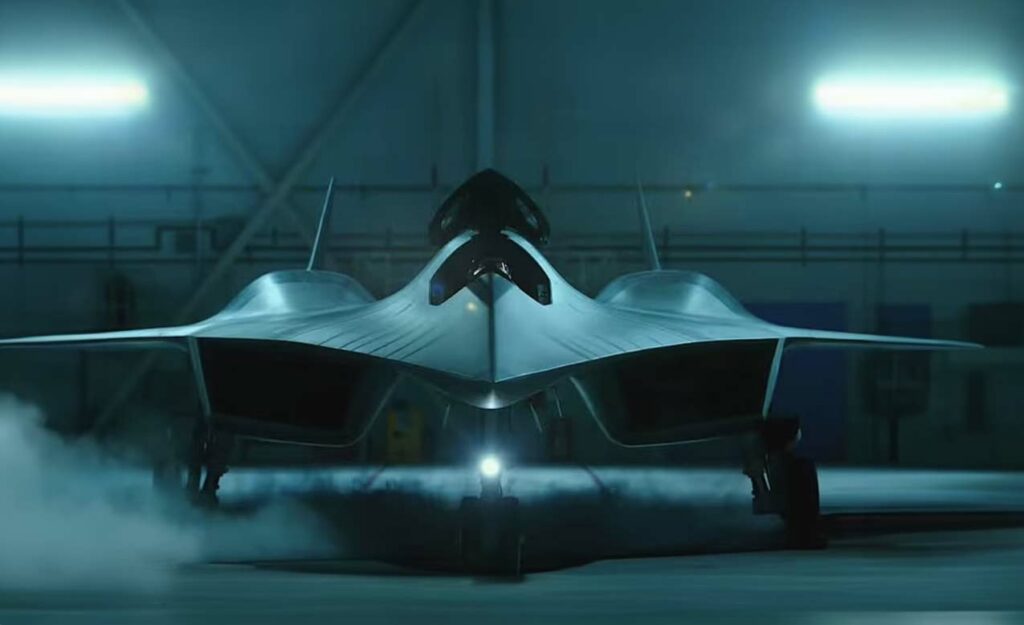
Reports indicate that Skunk Works is developing a highly classified reconnaissance aircraft, potentially the successor to the RQ-180. As the U-2S Dragon Lady prepares for retirement, reports hint at the existence of a new, highly classified ISR (Intelligence Surveillance Reconnaissance) asset designed by Lockheed Martin’s Skunk Works, paving the way for speculation about a potential successor to the legendary SR-71.
With the imminent retirement of the U-2S Dragon Lady, a major question mark looms over the future of the intelligence, surveillance and reconnaissance (ISR) aircraft that will replace this nearly 70-year-old aircraft. While we already know Northrop Grumman’s RQ-180 as the likely successor to the U-2, new information hints at the existence of another highly classified, far more capable ISR program being developed by Lockheed Martin’s secretive Skunk Works division. This article explores recent revelations about this mysterious reconnaissance aircraft, its potential implications and the enigmas that surround it.

Current ISR programs
According to Vago Muradian, editor and host of Defense & Aerospace Report, there are currently two ISR programs, one of which is Northrop Grumman’s RQ-180, apparently designated as the successor to the U-2. However, the second program involves a much more capable reconnaissance aircraft designed by Lockheed Martin’s highly secretive Skunk Works division.
Details of this highly classified reconnaissance aircraft are scarce, but it appears to have been designed to offer far superior capabilities to the RQ-180. Muradian mentions that items have already been delivered under this program, but that there have been challenges to overcome, resulting in a redesign of the project to reach the next stage of development.
The Mystery Surrounding the Reconnaissance Aircraft
Although information on this highly classified reconnaissance aircraft remains limited, it is interesting to speculate on what this aircraft might be based on the available clues. One plausible hypothesis is that it is the long-awaited successor to the legendary SR-71, commonly known as the SR-72.
Lockheed Martin had revealed the existence of the SR-72 project in 2013, describing it as an intelligence, surveillance and reconnaissance (ISR) and unmanned hypersonic strike platform, designed to reach Mach 6. Although the SR-72 has never been spotted publicly, and it remains uncertain whether a prototype has been built, the project has generated a great deal of interest.
In 2021, the US Air Force had already alluded to this hypersonic aircraft in a video presenting the evolution of the ISR mission since its inception. What’s more, the mysterious hypersonic aircraft featured in the Top Gun Maverick movie, the Darkstar, bore an uncanny resemblance to the SR-72 concept unveiled in Lockheed Martin promotional material.
Prototypes, demos or operational aircraft?
The question now is whether the “items” mentioned by Muradian are demonstrators, prototypes or operational aircraft. In the case of the SR-72, it has never been publicly seen, which leaves us in doubt as to whether it was a prototype. Northrop Grumman’s RQ-180, on the other hand, is very real, with several unofficial sightings and reports confirming its existence.
Nicknamed the “Great White Bat” (or sometimes “Shikaka”, in reference to a fictional sacred white bat from the film Ace Ventura 2), the RQ-180 is a low-visibility, high-altitude, long-endurance (HALE) drone first revealed in 2013. It has been designed to operate in contested or prohibited airspace. The aircraft is said to be similar in size and have a much longer endurance than the RQ-4 Global Hawk. Some believe that the RQ-180 is already operational, replacing missions previously assigned to the RQ-4.
However, a conventional UAS (Unmanned Aerial System) like the RQ-180 would take hours to reach its patrol zone, even if deployed relatively close to the target. For targets requiring a rapid, non-persistent presence at a great distance from the deployment base, a hypersonic ISR platform would be required.
Implications of an ISR Hypersonic Aircraft
The US Air Force has been considering the possibility of such a capability for some time, and recent revelations suggest that the USAF may be working towards this goal. A hypersonic reconnaissance aircraft would offer several key advantages:
High discretion: One of the main features of such an aircraft would be its low visibility. The relevance and quality of the intelligence gathered would be considerably reduced if the adversary knew he was under surveillance. An ultra-fast, stealthy intelligence platform could collect intelligence in several spectral domains potentially without being detected, thus improving the relevance of intelligence.
Speed: An ultra-fast platform (some sources suggest a speed of Mach 6 or more) could be quickly over the targeted reconnaissance zone. It could provide real-time intelligence via a secure data link, or quickly return to the ground to retrieve and analyze the data collected.
Difficulty of interception: One of the main defensive features of the SR-71, which reached Mach 3+, was its speed and altitude. It could evade most enemy missiles and interceptors. However, advances in detection, tactics, aircraft, weapons and surface-to-air missiles, as well as directed-energy weapons (such as those developed by China), demand an even faster, higher-flying, low-visibility platform.
On-board decision-making: An ultra-fast, long-range, crew-operated ISR platform would retain human decision-making capability in the mission loop. While this may not be essential in the ISR role, it could be in the strategic strike role. Once strategic strike platforms, such as ICBMs and cruise missiles, are committed to attack, they can be difficult to reassign or cancel, especially in a dynamic tactical environment. An ultra-fast, manned strategic strike platform with global reach keeps a human in the decision loop. This has both empirical and moral advantages.

The potential development of a highly classified hypersonic reconnaissance aircraft by Lockheed Martin’s Skunk Works is raising many questions and generating excitement in the military aviation world. Although details remain scarce and information fragmentary, the idea of an ultra-fast, stealthy ISR platform paves the way for significant advances in military surveillance and reconnaissance. If these revelations are confirmed, the future of ISR could well be redefined, with major implications for military operations and strategic intelligence. All that remains now is to wait and see if this mysterious aircraft will emerge from the shadows to reveal its revolutionary capabilities.
War Wings Daily is an independant magazine.